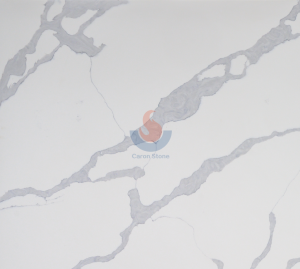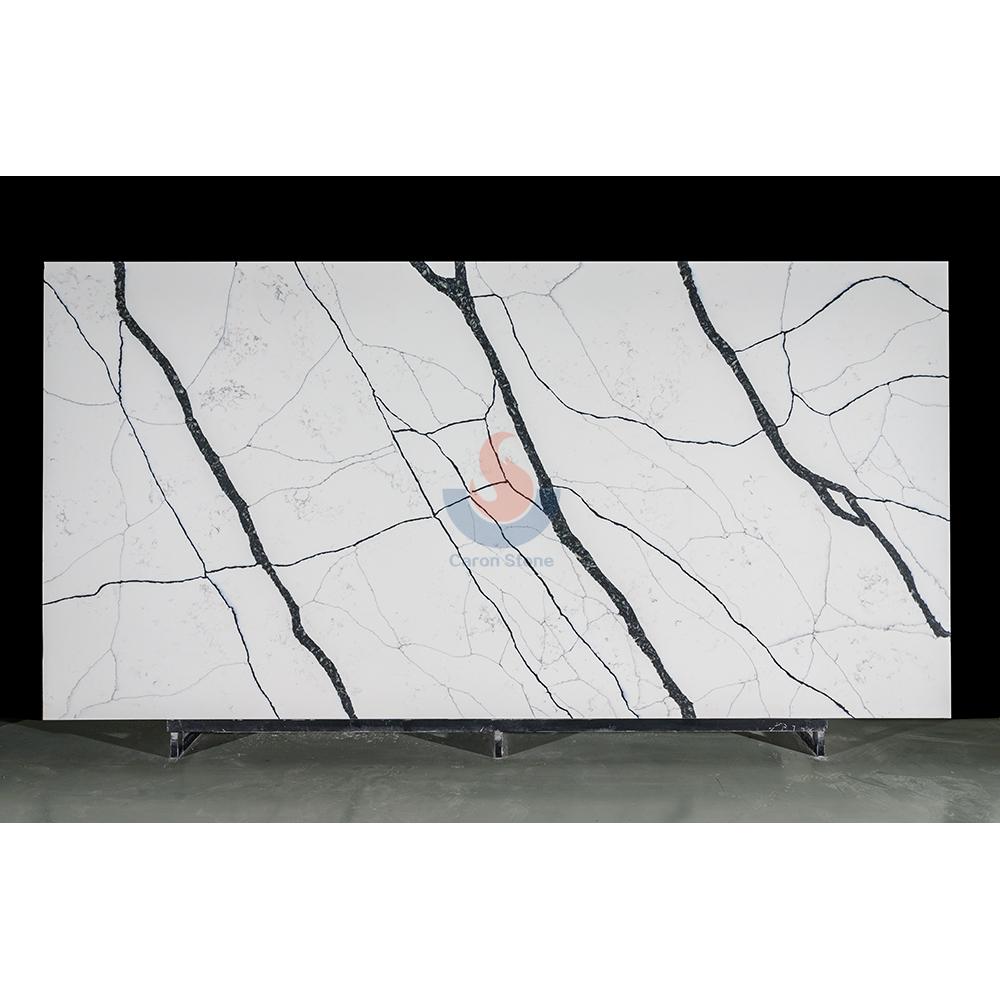With the continuous upgrading of modern home decoration concepts, quartz slabs have become a popular decorative material in the market with their wear resistance, scratch resistance, high temperature resistance and other characteristics. Its production process is a delicate art. From the selection of raw materials to the packaging of finished products, every link is crucial to ensure the excellent quality and perfect appearance of the slabs.

White quartz slabs for kitchen table countertops
The production process of a qualified quartz slab includes the following processes: raw material selection, material selection, batching, mixing, cloth, vacuum high-frequency vibration platen, heating and curing, thickness determination, polishing, inspection and packaging. These processes ensure the quality and performance of the slabs and meet the needs of consumers.
Process 1·Raw material selection
purchase of raw and auxiliary materials including resin, quartz, glass, curing agent and additions
Process 2·Material selection
To guarantee the purity of quartz slabs, remove iron filings and contaminants from quartz sand using hand selection or color sorter and iron removal equipment.
Process 3·Batching
Following the choice is finished, the ingredients are put into the mixer in batches. To solve issues such color difference and uneven particles, the components are completely blended in the mixer.
Process 4: Stirring
Grind and distribute the pigment, then blend it with resin, quartz sand, quartz powder and additives to guarantee that every component is equally mixed.
Direct effects on the color of the board will be the stirring time of the color paste and the resin to colorant ratio.
Process 5· Fabric
Fabric: The mixed material is conveyed into the fabric car through the conveyor belt, and then the fabric car evenly spreads the material into the mold.
Process 6·Vacuum high-frequency vibration press plate
After the fabric is finished, it is sent to the vacuum vibration press and vibrated under a vacuum condition near to -0.1MPa to guarantee that the table is dense and pore-free.
Pressing will help you remove the paper to guarantee that every part’s bonding degree is constant and that no local bulging results. The whole board surface ought to be consistently soft when touched with fingers.
Process 7·Heating and curing
Cures and heating: After pressing, the rough board enters the curing furnace and is cured and formed at 80-90℃ to guarantee that the board is cured uniformly and thoroughly, so strengthening the board and preventing deformation.
Use an iron pipe with a wall thickness less than 3mm to softly tap different areas of the quartz stone board once it comes out of the curing line. Should the sound be crisp, the curing effect is good; should the sound be dull, the curing effect is poor.
Process 8·Thickness determination
First step of rough board thickness determination is the polishing line transfer of the cured and cooled boards.
Process 9·Polishing
Following the thickness determination, constant water polishing—from coarse to fine—through more than 20 steps ensures the glossiness of the board surface.
Usually about 40°, the glossiness decreases with decreasing particle size of the board and increases during polishing. Particularly the board with bigger glass particles, the particle size determines the glossiness; normally, the glossiness after polishing is approximately 60°.
Process 10·Inspection
Examining the board’s look, size, and some performance in line with quality criteria helps to prevent unqualified products from leaving.
Common flaws of quartz stone are holes, impurities, color groups, paper skin depression, color difference, deformation, fissures, missing corners, wear markings, thickness inaccuracy.
Process 11·Packaging
Packaging: Print codes, apply protective film, and package the qualified products.

Calacatta White Artificial Quartz 46
Ultimately, the production of quartz slabs is a sensitive and difficult operation. It not only shows rigorous management of product quality in every stage but also addresses several important operations from raw material selection to final inspection. The meticulous design and implementation of these procedures not only guarantee the slabs’ performance and appearance but also show the relentless search of raising consumer quality of living.





